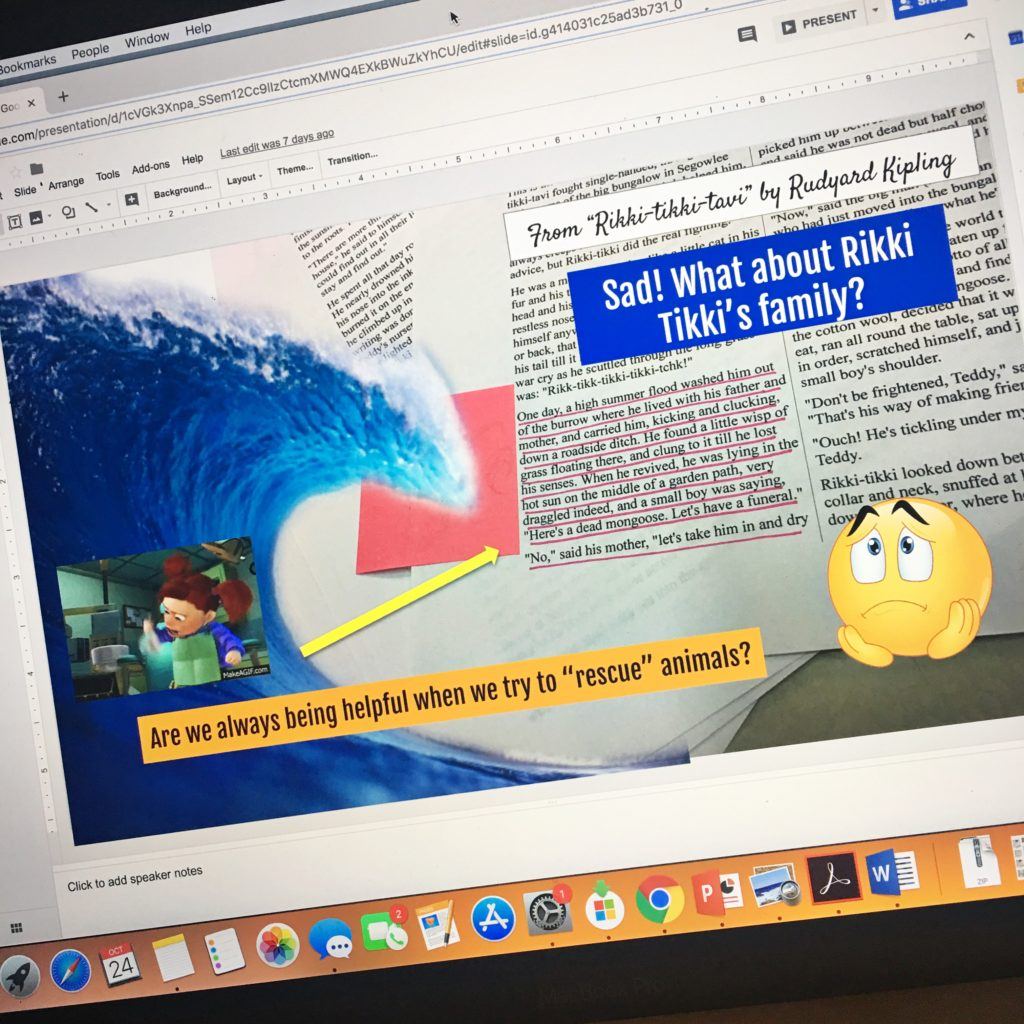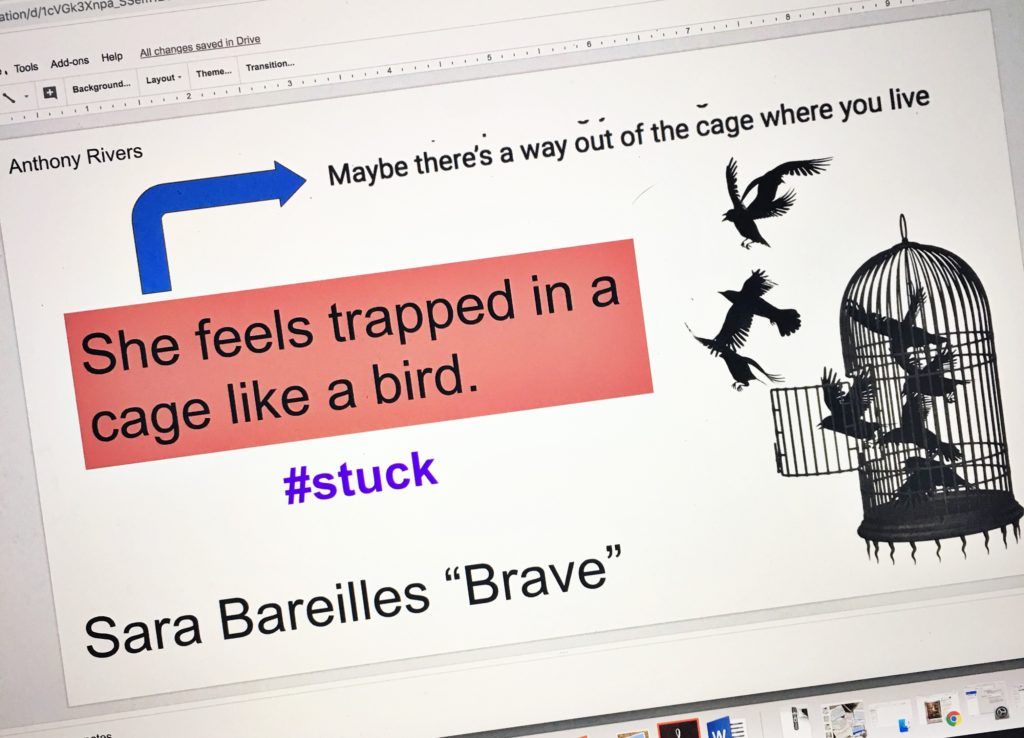Scaffolding a Booksnap Lesson: Amplify Reading Comprehension
Looking for a fun booksnap lesson? Booksnaps are one of the newer trends in reading education. They originated with Tara Martin on Twitter and have steadily grown in popularity in a short period of time. In essence, booksnaps are a way for students to visually show how they are reacting to, processing, and / or connecting with a text. As such, they are more meaningful for the creator than the audience.
Contrary to popular belief, booksnaps aren’t just for ELA. They are for all subjects. Any time you want students to slow down and truly process how they are thinking about a text, you can use them. Change your goal for what you’d like students to demonstrate through their snap based upon the standard and content you are teaching at the time.
Just like one pagers, when I first contemplated trying them, I wanted to know how to scaffold the introductory booksnap lesson. Because I didn’t find much in the way of an answer to that on the web, a couple of my ELA friends and I began experimenting. In this post, I’m sharing the lesson that worked for us after careful planning.
The Hook
Everyone loves music. Music lyrics are bite-size texts that are quick to digest and evoke strong emotions. We used the song “Brave” by Sara Bareilles. At first, we planned to use the music video but found that it distracted students from the words. Instead, this is a version you could use with just the lyrics, and this is a combination of the video and lyrics.
Brain Break…
After listening, students stood up and faced a partner. The goal was to get their blood flowing and mouths moving so that they would be more likely to participate in discussion. Next, they talked about connections they made to the song. Here are the directions:
One of you will begin. That person will speak for 30 seconds and explain your reaction to, connection with, and emotions felt as you listened to the song. Please do not evaluate or critique the song at this time.
After 30 seconds, I redirected:
Now it’s the second person’s turn to talk. You have 30 seconds also but with an added responsibility. Begin with, “I heard you saying…” and paraphrase what your partner said to show you are listening. Then, explain how you responded to the song, which is probably different than your partner.
Whole-Class Discussion…
After returning to their seats, more students expressed that they didn’t like the song than those who did. That was perfect! I used that opportunity to help them understand that when we are reading a text we don’t enjoy, it’s critical that we can still connect with it so that we remember it, relate to it, and understand it better.
We then projected the song lyrics on the smart board. After explaining that we can make a connection to a whole book or a whole song, we talked about how we can also make a connection to a specific line or passage that speaks to us. That’s when I modeled a specific connection with the song “Brave.”
When I read the line “Maybe there’s a way out of the cage where you live,” it spoke to me. I have never thought about it from this angle. If we are feeling trapped because we cannot speak what we believe or be who we really are on the inside for fear of judgement, that is somewhat similar to living in a cage, like an animal. Are we truly free?
Then, I invited students to select lines that resonated with them. They did an AMAZING job! So many students who claimed they didn’t like the song raised their hands and shared specific lines and their connections. They shared about bullying, friendships, families, and trust.
Introducing Booksnaps
We transitioned from the song lyrics to the booksnap lesson by pulling up examples I created using Google Slides. Students were asked to study them the night before and to think about how they would define the term booksnap based on the examples, which helped speed up our discussion and promote critical thinking.

Earlier in the year, the students had read “Rikki-Tikki-Tavi,” so they were familiar with that story. Having a common text to discuss when introducing booksnaps is very helpful. Students quickly came to the conclusion that booksnaps are reactions to and connections to specific parts of a text as represented through various elements, like text, images, gifs, hashtags, and emojis.
A Note about Digital Citizenship…
After explaining my connections to the two example texts, we briefly covered digital citizenship:
- With booksnaps, we should always include the title and author of the text to cite our source.
- Content needs to be appropriate, as the products will be shared with others.
- We should not edit or delete anyone else’s work.
Offering choice…
We allowed students to create their booksnap using any photo editing program they enjoy. PicCollage, Notability, Slides, and Buncee are some common ones. Snapchat is where they originated (if your students are allowed to snap during school). However, we wanted them all to save their final booksnap image in a Google Slides presentation so that the class could watch them all play through and see how their peers responded to the same text.
Students were then assigned one page of “Rikki Tikki Tavi” in order to make their own booksnap. They could select any line(s) from that page. We wanted to give them a group so that they could compare reactions to the same part of the text, but we also wanted to make sure students were moving beyond page one when looking for a line or passage to snap.
Students had about fifteen minutes in class to begin their own booksnaps, which wrapped up Day 1 of our lesson.
Sharing Booksnaps
After reflecting on Day 1, we decided our students needed more scaffolding with the types of content they can put in a booksnap. Simply giving them a list of ideas and showing examples wasn’t enough. We had students who were leaving a lot of white space, who were summarizing, and who were only adding one or two additional components to their booksnaps. Here is an example of what we saw:
A lot of them were really more of a summary collage than a reaction or connection. So, I made a checklist to go with the booksnap lesson.
We began Day 2 by discussing the bad example I created (pictured above) and comparing it to the expectations on the checklist. After, I showed them how I improved upon my “bad booksnap” by discussing the image below. I explained to students that I’m still not 100 percent happy with it but that booksnaps are works of art, always in progress, just like our thoughts about a text after reading it.
Then, students shared their booksnaps with their group members to get feedback on what specific things they can improve upon in the future.
Getting Feedback…
To provide some closure and gather a little more data, we asked students to fill out a Google Form. We asked questions about what they enjoyed, what was difficult, how they reflected, how confident they feel about making one independently, and what questions they still had.
Because our students were just experimenting with booksnaps at an early stage, we decided we were not going to grade them. It’s important for students to know they can take a risk when trying something new without a fear of penalty if they do it “wrong.”
Overall, we loved this lesson, and the students did, too. I think the most important thing when trying your first booksnap lesson is to emphasize there is no one right way to create them. Also, make sure students know that it’s perfectly acceptable for them to make a different connection with a text than their peers. We all bring different life experiences and knowledge bases to the reading table.
Reflecting…
Next time, I want to explicitly model the thought process I put into transforming a “bad” booksnap into a “good” one. This will take time. But, it will help students to hear the internal dialogue while simultaneously seeing the changes.
I also think students would benefit from being assigned a specific passage from the text. Or, perhaps it would have worked to just give them a list of a few options for passages. Letting them choose any part was hard because some of them struggled to make connections, but not enough students had chosen the same passage to be able to see different perspectives on the same lines.
The takeaway is that the booksnap (even if it’s not perfectly designed or executed) should help a student comprehend a text more deeply. Months after finishing the story, students should be able to pull up their booksnap and remember what they read because of the nature of the personal response.
Perhaps you’ve been wanting to try booksnaps but haven’t been sure how to get started, or maybe you’ve never heard of them until now. I hope this post gives you some ideas for scaffolding your booksnap lesson successfully. With some practice, it really is a snap!
READ NEXT:
How to Run a Book Club in Your Classroom
Post-It Rereading: A Comprehension Strategy
Assessing Comprehension without Making Students Hate Reading
RELATED RESOURCE:
If you are looking for a specific booksnap lesson plan to introduce students to them, you may like this one – spot-a-book. It combines elements of booksnaps with social media platforms. But! Students are not asked to actually use social media to create their snap.





